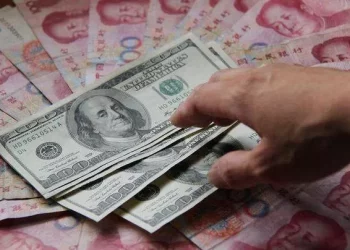In the vast and intricate realm of the foreign exchange market, the euro-pound exchange rate holds a significant position. As two major currencies within the European economic sphere, the euro (EUR) and the pound sterling (GBP) not only facilitate trade and investment between the eurozone and the United Kingdom but also reflect the economic health and policy stances of the regions they represent. Understanding the current euro-pound exchange rate is crucial for a wide range of market participants, from multinational corporations engaged in cross – border transactions to individual investors seeking to diversify their portfolios.The exchange rate between the euro and the pound is not only a numerical value but also a barometer of economic and political developments. Fluctuations in this rate can have far – reaching implications for various sectors, including tourism, manufacturing, and financial services. In the following sections, we will explore the current euro-pound exchange rate in detail, examining its recent trends, the factors influencing it, and its potential future direction.
The Current Euro-Pound Exchange Rate: Real – Time Figures
As of April 7, 2025, according to reliable financial data sources, the real – time exchange rate reveals several key figures. The exchange rate stands at 0.8537, indicating that 1 euro can be exchanged for 0.8537 pounds. There has been a positive movement in the rate, with a gain of 0.005060. This corresponds to a percentage increase of +0.4093%. The daily trading range shows that the rate reached a high of 0.8548 and a low of 0.8471. The opening rate for the day was 0.8486, which was also the closing rate of the previous day.
Comparison with Other Platforms
Some other platforms provide slightly different but closely related figures. For instance, certain real – time currency converters suggest that 1 euro is equivalent to 0.85456 pounds, while 1 pound can be exchanged for 1.17012 euros. These minor discrepancies can be attributed to differences in data collection methods, the timing of data updates, and the specific market segments targeted by the platforms.
Historical Perspective on the Euro – Pound Exchange Rate
Long – Term Trends
Over the long term, the euro – pound exchange rate has experienced significant fluctuations. Since the introduction of the euro in 1999, the rate has been shaped by various economic and political events. For example, during the global financial crisis in 2008, both the euro and the pound faced downward pressure. The financial turmoil in the United States had a spill – over effect on European economies, leading to a decline in the value of both currencies. In the subsequent years, the euro – pound exchange rate was influenced by factors such as the eurozone debt crisis, which affected the euro more severely, and the United Kingdom’s decision to leave the European Union, which had a profound impact on the pound.
Brexit and its Aftermath
The UK’s decision to leave the European Union, commonly known as Brexit, was a watershed moment for the euro – pound exchange rate. In the lead – up to the Brexit referendum in 2016, the pound faced significant uncertainty, leading to a sharp depreciation. After the referendum, the pound continued to fluctuate as negotiations between the UK and the EU progressed. The final Brexit deal, which was reached at the end of 2020, brought some clarity but also introduced new challenges, such as changes in trade relations and regulatory frameworks. These developments have continued to influence the euro – pound exchange rate in the post – Brexit era.
Factors Influencing the Euro – Pound Exchange Rate
Macroeconomic Indicators
Macroeconomic indicators play a crucial role in determining the value of the euro and the pound, and consequently, the euro – pound exchange rate. Key indicators include GDP growth, inflation rates, and unemployment figures. In the eurozone, countries like Germany, France, and Italy, which are major economic powerhouses, have a significant impact on the overall economic performance of the region. For example, if Germany experiences strong GDP growth, it can boost the value of the euro. Similarly, in the UK, economic data from sectors such as manufacturing, services, and construction can influence the value of the pound.
Monetary Policy
The monetary policies of the European Central Bank (ECB) and the Bank of England (BoE) have a direct impact on the euro – pound exchange rate. The ECB sets interest rates for the eurozone, and changes in these rates can affect the value of the euro. A decrease in interest rates can make the euro less attractive to investors, leading to a depreciation. On the other hand, the BoE’s monetary policy decisions, including interest rate changes and quantitative easing measures, can influence the value of the pound. Differences in the monetary policies of the two central banks can create fluctuations in the euro – pound exchange rate.
Political Developments
Political developments in the eurozone and the UK can also have a significant impact on the exchange rate. In the eurozone, political stability, elections, and policy decisions at the EU level can affect the value of the euro. In the UK, political events such as changes in government, budget announcements, and trade negotiations can influence the pound. For example, a stable government in the UK with a clear economic agenda can boost investor confidence and strengthen the pound.
Impact of the Euro – Pound Exchange Rate
On Trade
The euro – pound exchange rate has a direct impact on trade between the eurozone and the UK. A stronger euro relative to the pound makes eurozone exports to the UK more expensive, potentially reducing demand. Conversely, it makes UK exports to the eurozone cheaper, which can boost UK exports. For example, if a German car manufacturer wants to export cars to the UK, a stronger euro would increase the price of the cars in the UK market, making them less competitive.
On Tourism
The exchange rate also affects the tourism industry. A weaker pound relative to the euro makes the UK a more attractive destination for eurozone tourists, as their money will go further. Conversely, it makes the eurozone more expensive for UK tourists. This can have implications for the hospitality and tourism sectors in both regions.
On Investment
Investors closely monitor the euro – pound exchange rate as it can impact the returns on their investments. For example, a UK – based investor holding euro – denominated assets may see an increase in the value of their investments if the euro appreciates against the pound. On the other hand, a eurozone investor with pound – denominated assets may experience a loss if the pound depreciates.
Analyzing the Euro – Pound Exchange Rate: Technical and Fundamental Analysis
Technical Analysis
Technical analysis involves studying historical price charts and using various technical indicators to predict future price movements. Traders who use technical analysis look for patterns such as trends, support and resistance levels, and chart formations. For example, if the euro – pound exchange rate has been in an uptrend for a certain period and is approaching a resistance level, technical analysts may anticipate a potential reversal or a period of consolidation.
Fundamental Analysis
Fundamental analysis, on the other hand, focuses on economic and political factors that can influence the exchange rate. Analysts using fundamental analysis examine macroeconomic data, central bank policies, and political developments to assess the intrinsic value of a currency. For example, if the UK economy is expected to grow at a faster rate than the eurozone economy, fundamental analysts may predict an appreciation of the pound relative to the euro.
Conclusion
The euro – pound exchange rate is a complex and dynamic indicator that reflects the economic and political landscape of the eurozone and the UK. As of April 7, 2025, the exchange rate shows a certain level and movement. Understanding this rate requires a comprehensive analysis of historical trends, influencing factors, and its impact on various sectors. Through technical and fundamental analysis, market participants can gain insights into the potential future direction of the exchange rate. However, it is important to note that the foreign exchange market is highly volatile and subject to unexpected events. Therefore, investors and businesses operating in the euro – pound market should closely monitor economic and political developments and use risk management strategies to mitigate potential risks.
Relatd topics


























